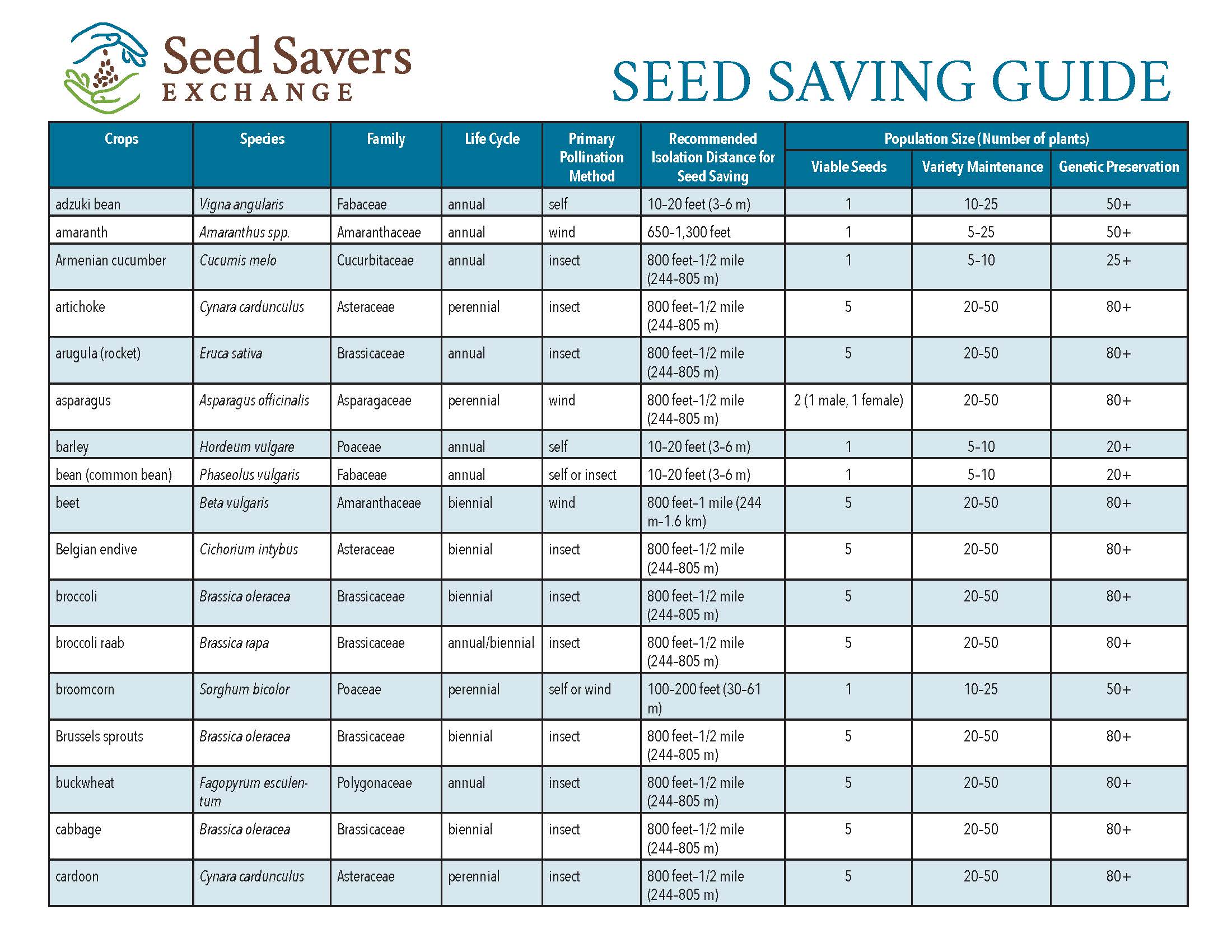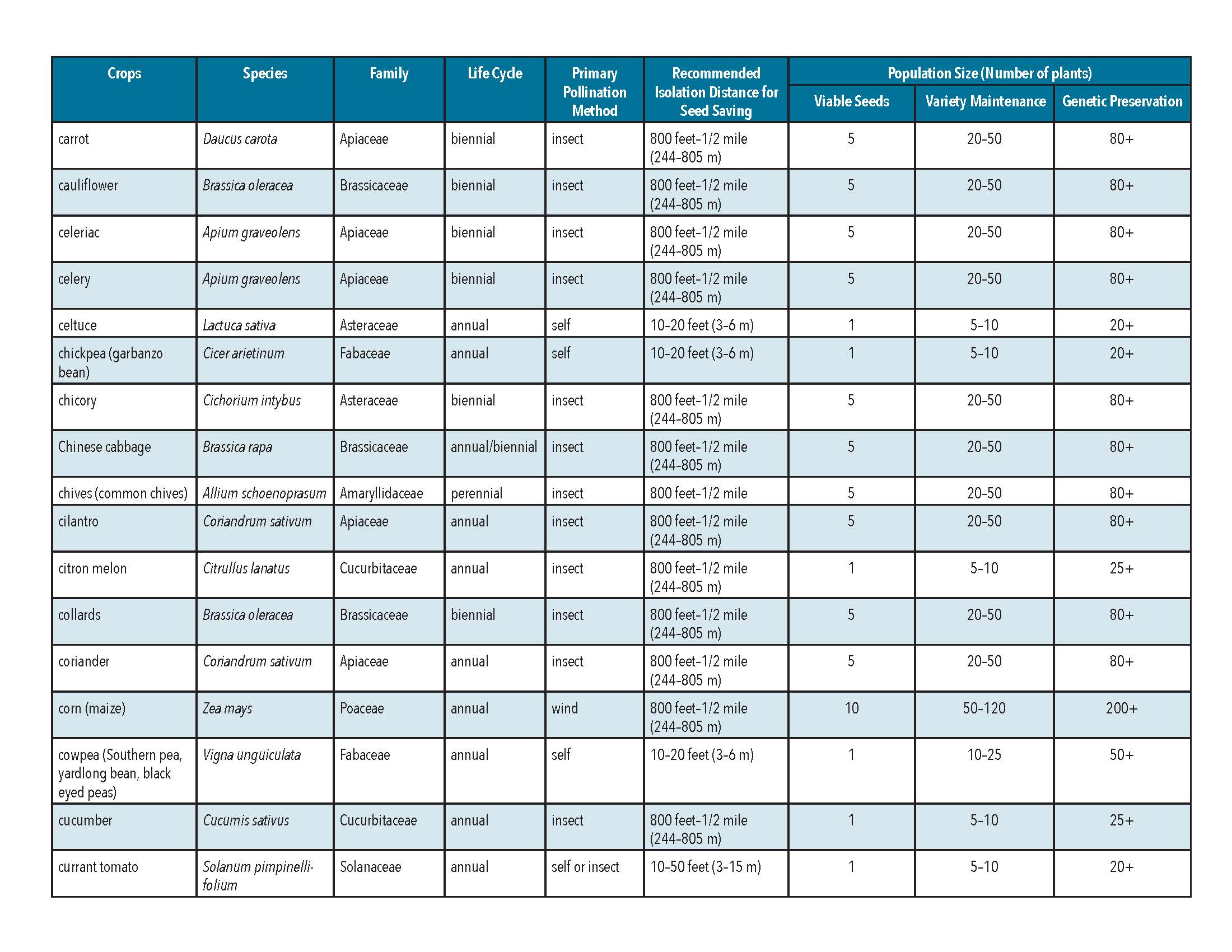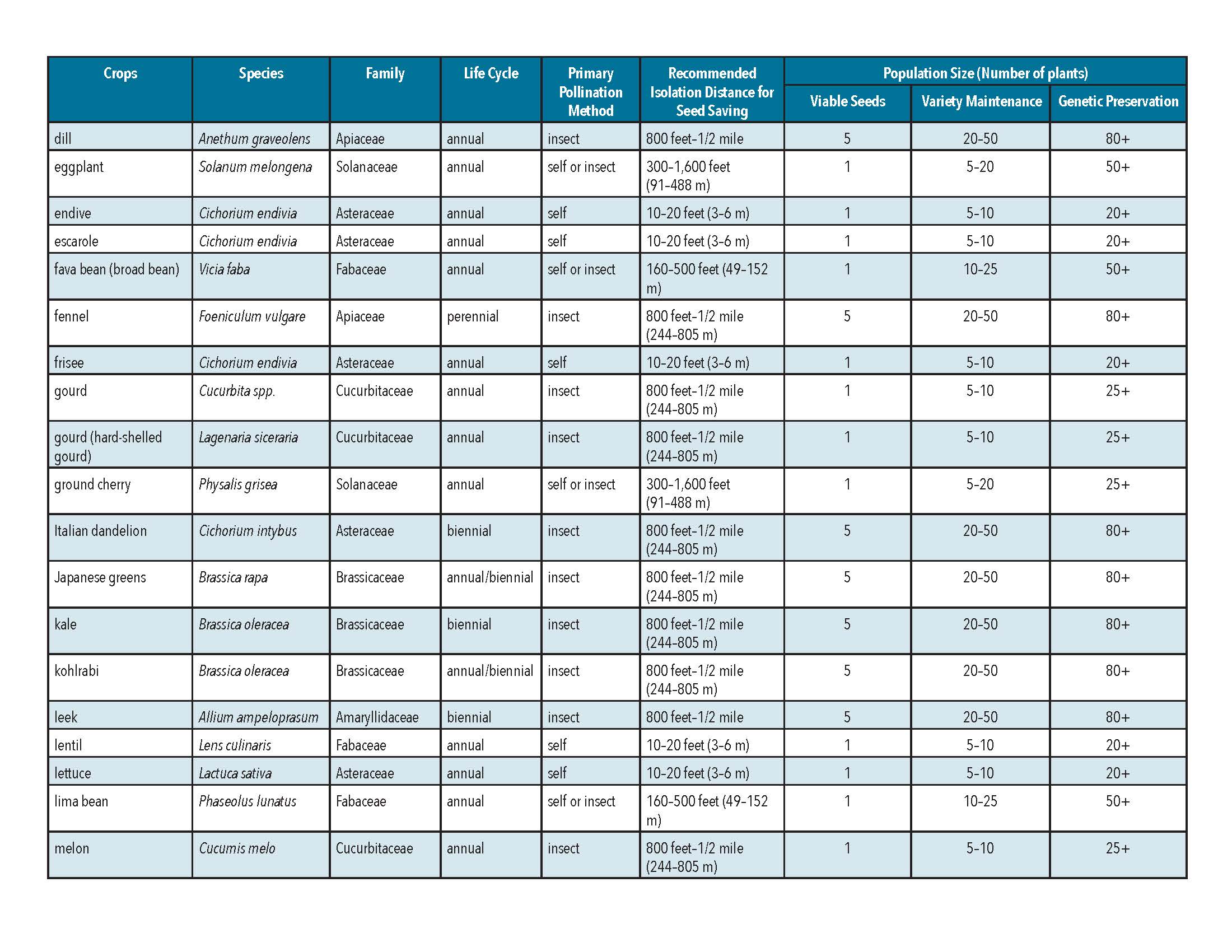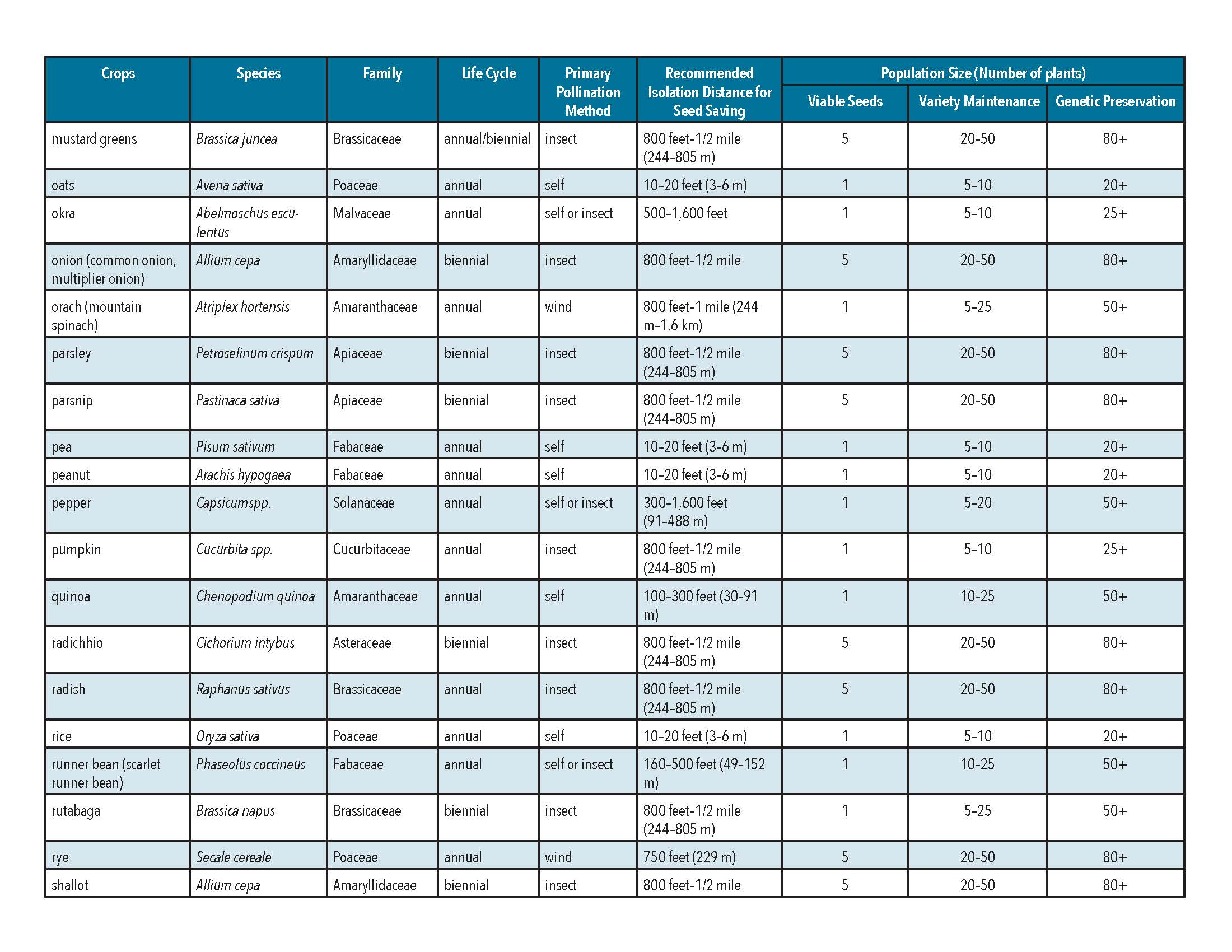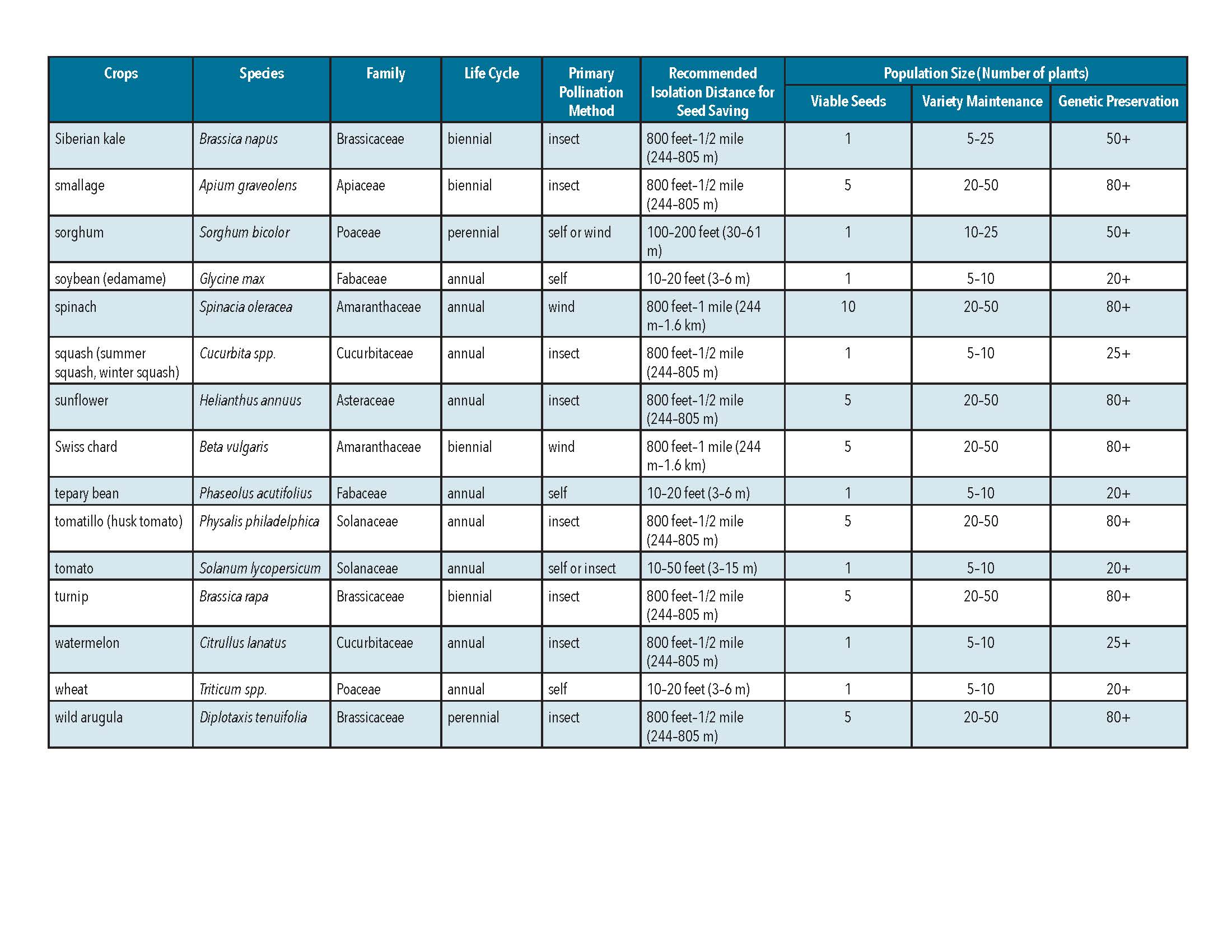Seed Saving Guide
Crops – The chart is organized alphabetically by crop type, all the way from amaranth to wild arugula.
Species – The species column shows the scientific name for each crop type. This is important because varieties of the same species can cross-pollinate, even if they are different crops! For example, both broccoli and cabbage belong to the species Brassica oleracea. When different varieties cross with each other, the seeds that they produce will lose their uniformity and distinct characteristics.
Family – The family column shows which plant family each crop belongs to. While knowing the family is not essential for seed saving, often times, crops in the same family can be treated similarly by seed savers. For example, carrots and celery belong to different species but are both members of the Apiaceae family: both crops are insect pollinated biennials that benefit from relatively larger population sizes (keep reading to learn more about population sizes).
Life Cycle – The life cycle of a variety tells you how many seasons it will take for that crop to flower and how long the plant will live. Annual plants complete their entire reproductive life cycle – from germination, through seed production and then on to death – in one season. Biennial crops require a period of cold weather in order to flower and therefore need the better part of two growing seasons to produce seeds. Perennials live longer than two seasons and many will not flower in their first year. In general, annual crops are easiest to save seed from because gardeners do not need to know how to overwinter plants.
Primary Pollination Method – There are three ways flowers are pollinated: by insects, by the wind, and all by themselves without the aid of either insects or wind (e.g. self-pollinating). How a plant is pollinated informs how far different varieties of the same species must be separated from one another in order to prevent unwanted crossing. In general, self-pollinating crops are easier for beginning seed savers to work with because each flower typically pollinates itself without help.
Recommended Isolation Distance for Seed Saving – Unless gardeners take action to distract or exclude pollinators from carrying pollen into their garden. They must rely on isolation by distance to prevent unwanted crossing between different varieties of the same species. For example, gardeners may need anywhere from 800 feet to ½ mile of distance between their watermelon patch and their neighbor’s in order to prevent bees from spreading pollen between the two patches. In general, plants that are self-pollinated require the shortest isolation distances and wind-pollinated crops require the greatest isolation distances. There are ways for seed savers to get around these large distances when space is limited.
Population Size:
Viable Seeds – This column shows the number of plants that are needed for a crop to produce viable seeds. In many cases, such as with lettuce and tomatoes, seed can be successfully obtained from a single plant. However, seed savers who are interested in maintaining varieties for more than one generation, or those who are concerned about maintaining a genetically diverse population should produces seeds from larger populations.
Variety Maintenance – The population size for maintaining a variety is a recommended range that seed savers should use when routinely growing a crop to save seeds. Larger populations will increase the chance that a variety will maintain a higher level of genetic diversity, which is more important for long term seed saving and/or when growers regenerate their seeds often (say every 1-3 years). Gardeners who are less concerned about losing genetic diversity, who can obtain new seed stocks if needed, and/or who store their seeds for long periods of time between regenerations may be okay using smaller populations.
Genetic Preservation – For seed savers who are engaged in long-term preservation projects, seed banking, and/or conservation efforts, the population sizes in this column indicate the minimum number of plants that should be grown to ensure that seeds retain a high level of their existing genetic diversity.
Download the Seed Saving Guide_2017
